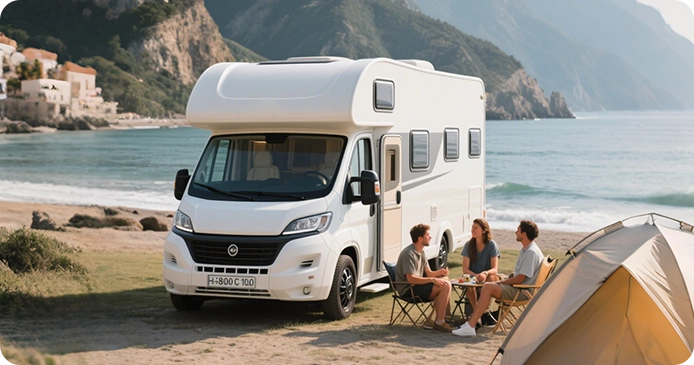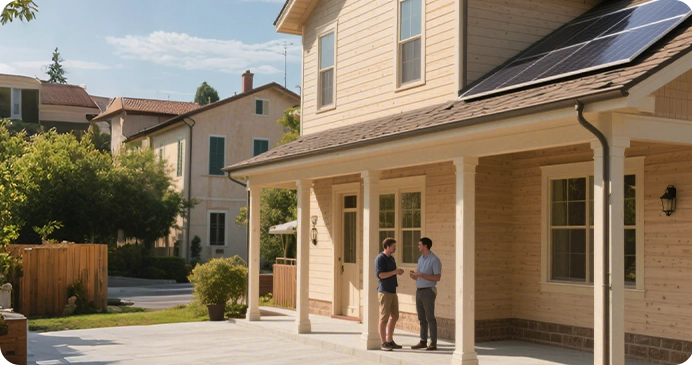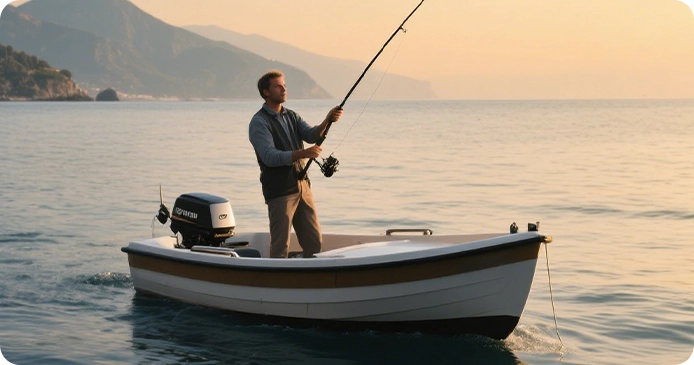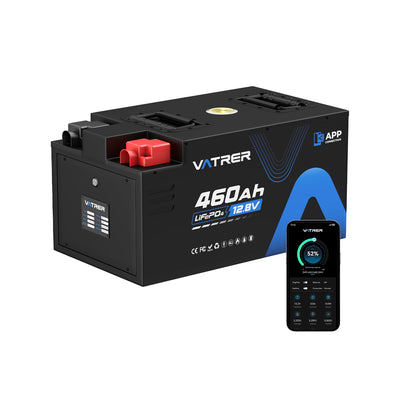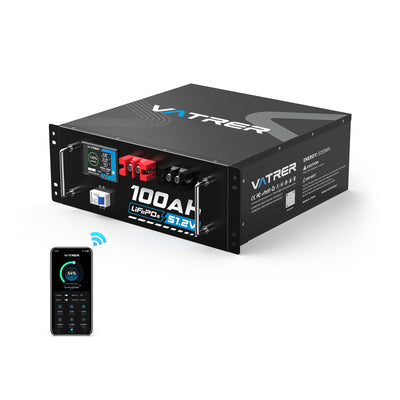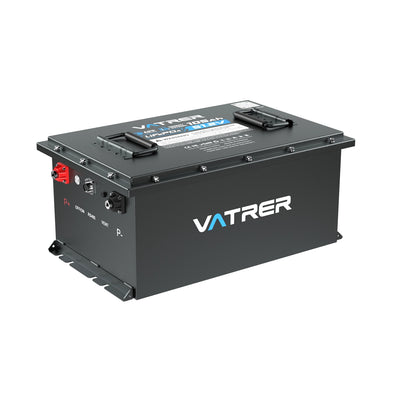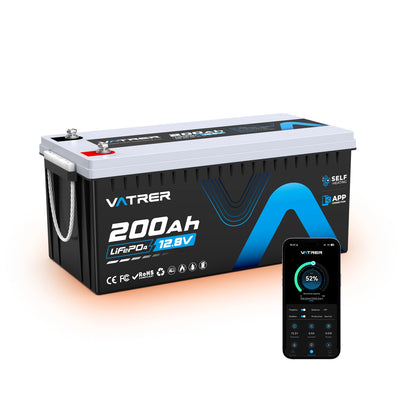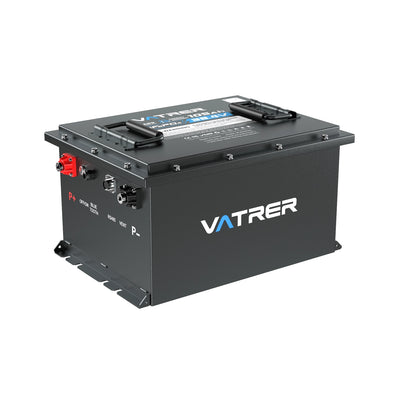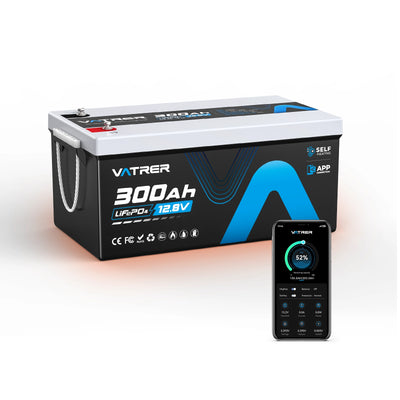LiFePO4 Battery vs. Lithium-ion Battery: An In-depth Comparison
Reading time 9 minutes
Choosing the most suitable lithium battery for backup systems, solar power units, electric mobility, or portable electronics requires a clear understanding of how different chemistries behave. LiFePO4 and traditional lithium-ion batteries each deliver specific strengths depending on whether your priorities lean toward safety, long-term durability, or lightweight performance. LiFePO4 batteries stand out for their excellent thermal stability, extended service life, and environmentally conscious composition, making them a strong option for renewable energy storage and professional industrial tasks. Lithium-ion batteries, on the other hand, provide higher energy density and reduced weight, which is why they are widely used in handheld devices, drones, and compact power solutions.
This guide offers an in-depth review of essential battery characteristics, including safety behaviour, energy density, overall mass, operating temperatures, lifespan, and pricing considerations. After reading, you will have a solid understanding of how LiFePO4 batteries compare to conventional lithium-ion units and which technology best fits your application.
What Is a LiFePO4 Battery?
A LiFePO4 battery—short for lithium iron phosphate—is a lithium-based battery that uses lithium iron phosphate as its cathode material and typically a carbon-based anode. Thanks to its inherently stable chemistry, the battery maintains strong resistance to overheating and structural degradation, making it safer and more durable than many mainstream lithium-ion chemistries. These batteries are frequently used in electric transport, solar power banks, energy backup systems, and marine electronics due to their long operational life (often approaching a decade) and cobalt-free, environmentally safer formulation.
What Is a Lithium-Ion Battery?
A lithium-ion battery uses metal oxides—such as nickel, manganese, or cobalt—as its cathode, paired with a graphite anode. Known for packing a large amount of energy into a compact format, lithium-ion cells are commonly found in smartphones, laptops, drones, and some electric vehicles. However, they tend to be more sensitive to heat and mechanical stress, making robust battery management systems (BMS) essential for safe operation.
LiFePO4 vs. Lithium-ion Batteries: How They Differ
The underlying chemistry of a battery determines how it performs, how safe it is under stress, and how it impacts the environment.
Although both technologies are widely used, they present clear differences. Below is a detailed comparison covering safety, energy density, weight, and other factors to help you understand how the two battery types diverge:
Safety
LiFePO4 batteries are generally regarded as safer than standard lithium-ion batteries. Their chemistry features strong molecular bonds between iron, phosphorus, and oxygen, resulting in higher thermal and structural stability. This significantly lowers the likelihood of overheating or thermal runaway. By contrast, lithium-ion batteries are more prone to fire or failure due to the reactive nature of their electrolyte and cathode materials.
For instance, when a lithium-ion battery is punctured or overcharged, the unstable electrolyte can trigger thermal runaway, rapidly raising internal temperatures and increasing the risk of ignition or explosion. LiFePO4 batteries, with their more robust chemical structure, are far less likely to experience such dangerous failures.
Video: LiFePO4 Drill Test! Will it erupt in flames?
Energy Density
Energy density measures how much energy a battery stores relative to its size or weight. Lithium-ion batteries typically achieve higher energy density (around 150–220 Wh/kg) than LiFePO4 batteries. They deliver more power per kilogram and occupy less space, which is why they are often used when space and weight reduction are essential.
For example, an electric vehicle equipped with a lithium-ion pack may gain 10–20% more driving range compared to an equally sized LiFePO4 pack. While LiFePO4 batteries hold slightly less energy per unit mass, they still perform well in setups where safety, long cycle life, and stability matter more than maximum density.
Weight
Weight plays a crucial role in determining how suitable a battery is for certain uses. LiFePO4 batteries tend to be heavier because of their iron-based chemistry and lower energy density. A typical 100Ah LiFePO4 battery weighs around 26–33 lbs (12–15 kg), whereas an equivalent lithium-ion (NMC) pack usually weighs 17–22 lbs (8–10 kg).
For outdoor trekking or applications where equipment weight must be kept low, lithium-ion packs can reduce your load by roughly 20%. Yet for RV systems, marine setups, or stationary equipment, the added weight of a LiFePO4 unit has minimal practical impact and is often outweighed by its durability and safety benefits.
Temperature Range
LiFePO4 batteries support a wider operational temperature range, functioning reliably from -4°F (-20°C) up to roughly 140°F (60°C). This makes them well-suited for locations with harsh winters or high summer heat.
Standard lithium-ion batteries usually operate between 32°F (0°C) and 113°F (45°C). Using them outside this temperature range can reduce performance or cause safety concerns.
Charging and Discharging
Charging behaviour strongly influences usability. LiFePO4 cells carry a nominal voltage of 3.2–3.3V and usually charge at about 1C, reaching full charge in roughly 3 hours with around 95% efficiency. Their flatter voltage profile can make SoC (state of charge) estimates less precise—typically around ±10%—and therefore requires a capable BMS when used in systems like solar power banks.
Lithium-ion cells, with a nominal voltage of 3.6–3.7V, offer more accurate SoC readings (±1–2%) and generally charge at 0.7–1C, completing a cycle in 3–3.5 hours at about 90% efficiency. LiFePO4 batteries tolerate deeper discharge levels—up to 80% DoD—without notable wear, compared to roughly 50–60% for many lithium-ion chemistries. This makes LiFePO4 an excellent choice for backup power and daily cycling.
Lifespan
LiFePO4 batteries provide a much longer service life than most lithium-ion alternatives. They can handle thousands of cycles before notable degradation occurs, which is why they are favoured for renewable-energy storage and long-term power systems.
Typical lithium-ion batteries may start to lose performance after around 500 cycles, and their capacity gradually declines over time, reducing how long they can hold a charge.
Cost
The cost per watt-hour varies across chemistries due to material choices, production complexity, and demand. LiFePO4 batteries may cost slightly more upfront than their lithium-ion counterparts because of their different material composition and more recent adoption in mainstream markets.
However, their superior lifespan and enhanced safety often make them more cost-effective over the long term, particularly in applications requiring frequent cycling or long operational life.
How to Choose the Right Battery Type
Selecting an appropriate lithium battery technology requires assessing several factors:
- Capacity: Calculate watt-hours (Wh) based on your device or system needs. For example, a 1000W appliance running for 2 hours requires 2000Wh (Working Time = Capacity in Wh × 0.85 / Device Wattage).
- Safety: Choose batteries equipped with comprehensive BMS protection—overvoltage, thermal management, and short-circuit safeguards are essential for EVs and power backup solutions.
- Lifespan: For long service life and frequent cycling, LiFePO4 is generally the better choice.
- Cost: Consider the full lifecycle cost, not just the purchase price. A longer-lasting battery may reduce replacement frequency.
- Other Lithium Types: Compared with LiFePO4, variants like NMC, LCO, or LTO offer different strengths. NMC excels in high-power systems, LCO dominates consumer electronics, and LTO supports ultra-fast charging. LiFePO4 prioritizes stability and safety, but at lower energy density.
Conclusion
This comparison shows that LiFePO4 and lithium-ion batteries each serve distinct roles. LiFePO4 solutions deliver exceptional stability, long lifespan, and strong performance in a broader temperature range. Lithium-ion batteries offer higher energy density and reduced weight, which can be advantageous in compact or mobile electronics.
Your final choice depends on budget, safety expectations, environmental conditions, and performance requirements. Carefully assessing factors such as energy density, operational temperatures, long-term durability, and system compatibility will help you determine which battery chemistry aligns best with your needs.
If you are planning to replace ageing lead-acid batteries, Vatrer’s lithium iron phosphate batteries provide up to 4,000 cycles, integrated BMS protection, and Bluetooth connectivity—making them a dependable choice for solar setups, EVs, and many other applications. Explore the Vatrer battery line to secure stable and consistent power for your projects.
FAQs
Share





























